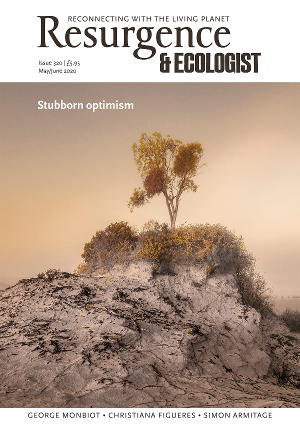It’s no surprise when Adele Brand announces, “There is a fox cub on my head.” She knows foxes in all their guises: up close and personal, in our urban world, through careful interventions to improve their health, and, scientifically, as a mammalian ecologist who has led research in five countries. With this intimate yet global perspective, The Hidden World of the Fox brings this often misunderstood animal’s life into full, multisensory colour, as surely as if we too had a fox cub on our head.
Make no mistake, though – these are not cutesy anecdotes. Brand has a deep love of foxes, but it is one without sentimentality or anthropomorphism. She is acutely aware of their wild ‘otherness’ and the importance of keeping them wild: “It may be tempting to cuddle a young animal as pretty as a fox cub,” she explains, “but if they are to survive in the wild as adults, they need to be treated as wildlife.” Indeed, Brand notes that it is in scenarios where foxes are fed that they are more likely to become problematic to humans.
It would have been easy for this book to become bogged down in the controversy surrounding this creature – both hunted and hunter, cherished almost-pet and supposed wolf-like savage of our streets, just waiting to prey on babies or cats. It is with skill that Brand addresses all this emotional baggage, swiftly and scientifically dispatching inaccuracies and moving on to a deep and intimate understanding of an animal often only seen in glimpses.
We discover the fascinating social politics of foxes, a world far more complex than I had imagined. Any fox population is made up of four social classes of fox: breeders, subordinates, juveniles and transients. Subordinate vixens won’t breed, even if they are mature, but instead they support the dominant vixen with raising her young. If a subordinate vixen became pregnant, stress hormones would most likely make her miscarry. However, she is in prime position to take over should anything happen to the dominant vixen. Not only is this insight into hierarchies interesting, but also it makes a strong case for why culling foxes in an area is ineffective – kill a breeding vixen, and a non-breeding subordinate will assume her place.
Throughout the book, it is the fox’s adaptability that shines through. From ancient woodland to busy supermarket car park to railway line, from isolated desert to polar region, they can make a life and a niche for themselves almost anywhere. Brand beautifully describes individual sightings, often illustrated with photos, bringing us into the world of one particular fox or family, like this urban female: “A small vixen with a slender face and wary eyes tugs at chips dropped by the workmen, slicing artificially flavoured potatoes with enlarged molars called carnassials… She digs under the perimeter fence, and darts across the main road.”
Brand recognises that the fox is exceptional as a survivor: “The fox is not an intruder into our world. We have simply laid our modern ambitions over the landscape it already knew.” It is of course more often the case that we lament the loss of the creatures whose world we have humanised, and this is the sad undertow beneath the thriving fox population.
This book is not so much a history of the fox or a biological investigation, although it is both those things. It reaches further, somehow distilling the essence of fox, the very foxiness of fox into its pages: mysterious, entertaining, relatable and part of our popular culture. We may not have foxes on our heads, but by reading this book you will surely have them in your head, weaving their magical, animal spell as you long for vulpine glimpses of your own.







